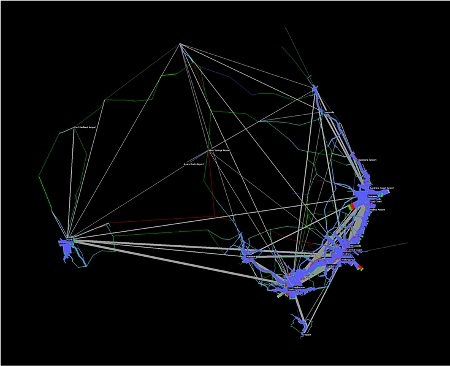Earth to moon in 8 years, Melbourne to Brisbane in 45
When John F. Kennedy saw a challenge worth taking he decided to get on with it as quickly as humanly possible, and in eight years Neil Armstrong was walking on the moon. On the other hand, our federal transport minister would have us believe building a high-speed railway from Melbourne to Brisbane will take 45 years.
The economic windfall which high speed rail will deliver to Australia has finally been recognised by the federal government, and that's a good thing. But political delay and gold-plating could leave this as just a dream for another two generations of Australians.
Forty-five years is laughable.
Much has been made of the ‘technical and logistical challenge’, but we must get some perspective. Australia is in large part flat and vacant – a luxury that no other country operating HSR (high-speed rail) can boast. While there are some challenging points on the alignment, such as from Sydney to the Central Coast, a high proportion of the route is flat fields.
Spain and China have been rapidly constructing HSR in order to reduce the huge cost to those countries of imported oil and have completed 3,000km and 15,000km of track respectively in the past decade alone.
Indeed, these findings are an insult to the capability of Australia’s construction industry.
Beyond Zero Emissions has done its own study on the HSR route in partnership with the German Aerospace Centre (DLR). The research, which will be published in full in May, indicates that the chosen HSR route could instead be built for around $70 billion.
By making this project a life’s work no doubt adds considerably to the financial challenge as well as the gold plating which is evident in the cost estimates.
The notion of $114 billion is questionable to say the least.
The savings come from careful attention to the rail pathway to avoid the most difficult terrain along the corridor. Where every kilometre of avoided tunnel saves $160 million and bridge saves $100 million, every little bit adds up to big savings for a 1,750 kilometre alignment. This analysis has been a collaborative effort by BZE and the DLR.
Trains travelling up to 400km/h are restricted to curves of around a 10km radius. This is a very gentle curve but allows enough flexibility to avoid many challenging obstacles. In mapping out a route based on the design limitations of high speed trains the BZE-DLR work has resulted in close to half of the 144km of tunnel suggested by the government study.
Another area for large cost reductions is the challenge of accessing the major city centres. The reason this is so high in the government study is due to the inoffensive but very expensive approach of tunnelling from the fringe to the centre of each city and underground stations.
This is largely avoidable, even in Sydney, by exploiting existing infrastructure corridors (existing rail, freeways, or transmission lines) and also adds markedly to the savings.
The options should be made available for the public to think about.
Considering the stages broken down by the government study, each could be delivered for a cost in the same order of magnitude as many of the long list of projects each of Australia’s big cities is currently considering to deal with further congestion.
When commuting from Wagga Wagga to Melbourne or Sydney would be faster than from the edge of suburbia, HSR would address the root cause of congestion in each city as well as dramatically improving the service level of transport to regional Australia.
The importance of HSR is underlined by the high concentration of domestic travel along the corridors between Melbourne, Sydney and Brisbane, as shown in the image below.

Air travel between Australia’s three major cities is among the world’s highest. In terms of aircraft movements, the Sydney-Melbourne route is ranked number 4 in the world, Sydney-Brisbane, 13, and Melbourne-Brisbane, 36. These are statistics that only Qantas would be proud of.
HSR not only withdraws the domestic pressure on Australia’s major international airports, at the same time it also brings regional Australia within range of the economic centres and delivers visitors to the truly unique outback and coastal areas Australia is renowned for.
Today’s transport planning is for the years ahead. The time is now to be building transport infrastructure that matches Australia’s travel activity, scales easily with growing demand, eases the congestion on our cities and can be powered by renewable energy. High speed rail is a real solution.
It's a big project, but it will deliver big savings – whether you count them in dollars or carbon emissions.
Gerard Drew is a researcher for the Zero Carbon Australia Transport Plan with the climate change solutions think-tank Beyond Zero Emissions.
















